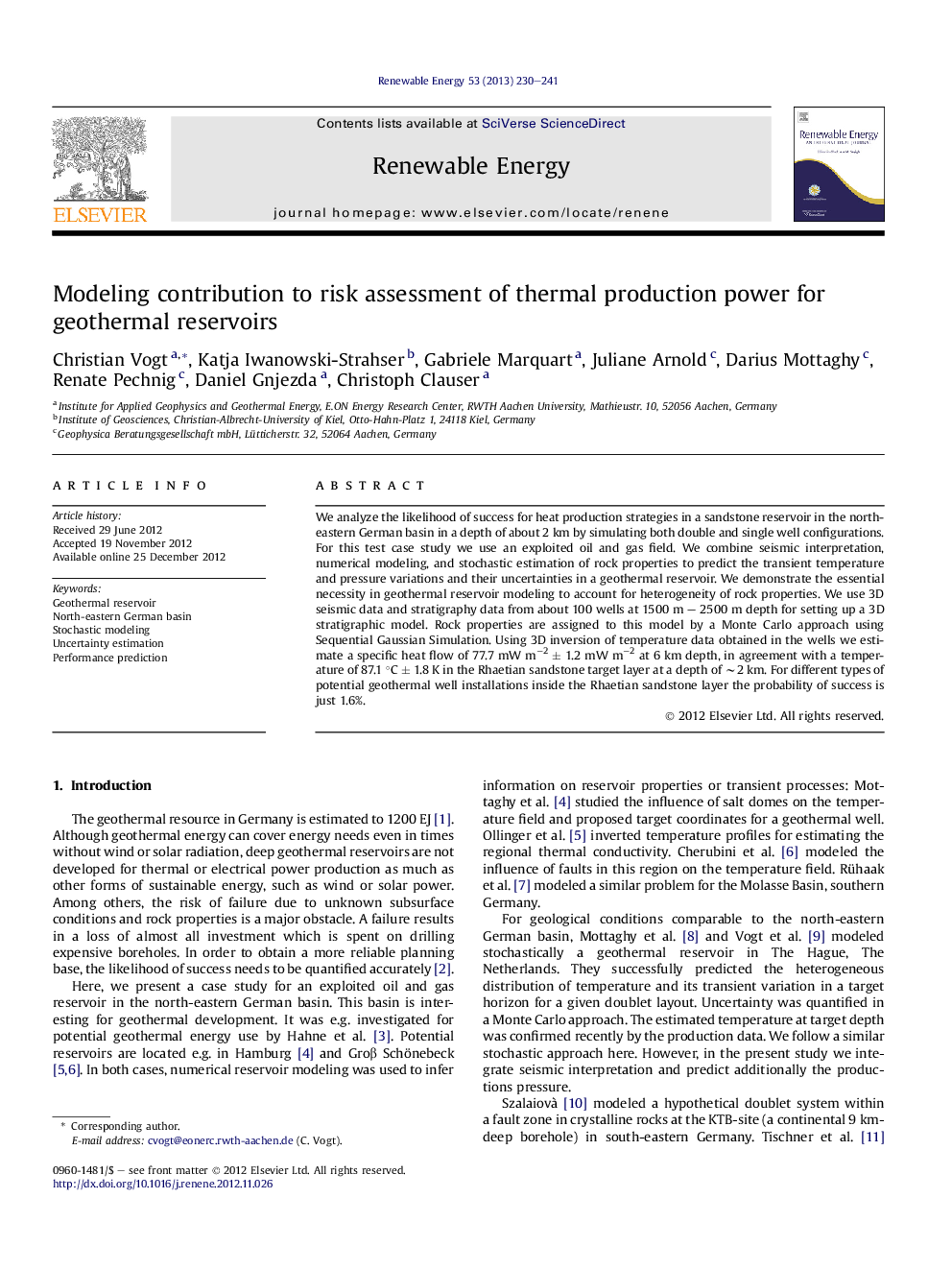| Article ID | Journal | Published Year | Pages | File Type |
|---|---|---|---|---|
| 300509 | Renewable Energy | 2013 | 12 Pages |
We analyze the likelihood of success for heat production strategies in a sandstone reservoir in the north-eastern German basin in a depth of about 2 km by simulating both double and single well configurations. For this test case study we use an exploited oil and gas field. We combine seismic interpretation, numerical modeling, and stochastic estimation of rock properties to predict the transient temperature and pressure variations and their uncertainties in a geothermal reservoir. We demonstrate the essential necessity in geothermal reservoir modeling to account for heterogeneity of rock properties. We use 3D seismic data and stratigraphy data from about 100 wells at 1500 m – 2500 m depth for setting up a 3D stratigraphic model. Rock properties are assigned to this model by a Monte Carlo approach using Sequential Gaussian Simulation. Using 3D inversion of temperature data obtained in the wells we estimate a specific heat flow of 77.7 mW m−2 ± 1.2 mW m−2 at 6 km depth, in agreement with a temperature of 87.1 °C ± 1.8 K in the Rhaetian sandstone target layer at a depth of ∼2 km. For different types of potential geothermal well installations inside the Rhaetian sandstone layer the probability of success is just 1.6%.
► A geothermal reservoir in 2000 m depth in northern Germany is modeled numerically. ► We combine seismic interpretation and stochastic estimation of rock properties. ► A doublet and a single-well concept are compared. ► Transient temperature and pressure variations and their uncertainties are predicted. ► We provide a methodology to estimate likelihood of success of a geothermal well.
